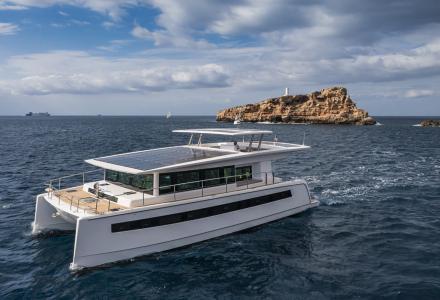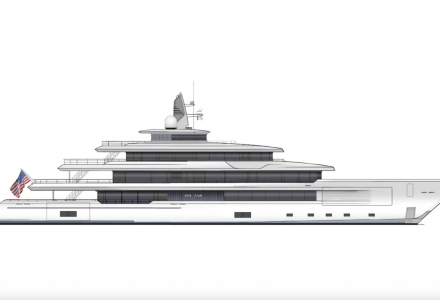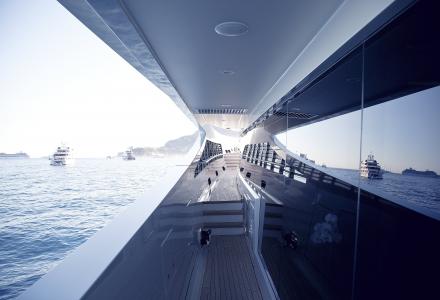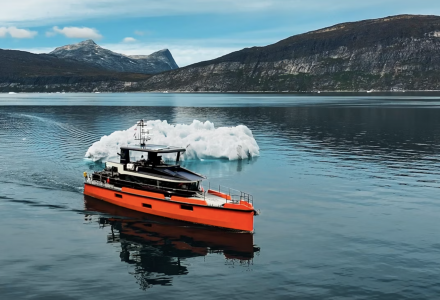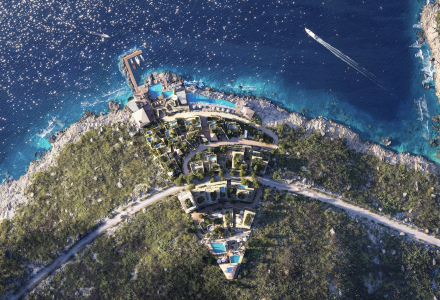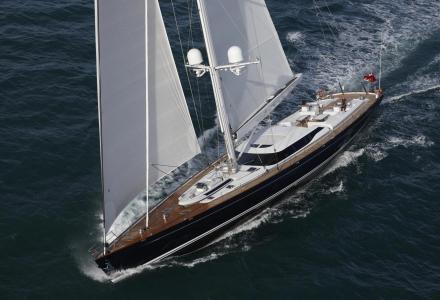After presenting the first ocean-going production yachts in the world that are fully sustainable and powered by solar energy, Silent-Yachts now is the first boat builder to date to design and build boats for the use of a kite sail system.
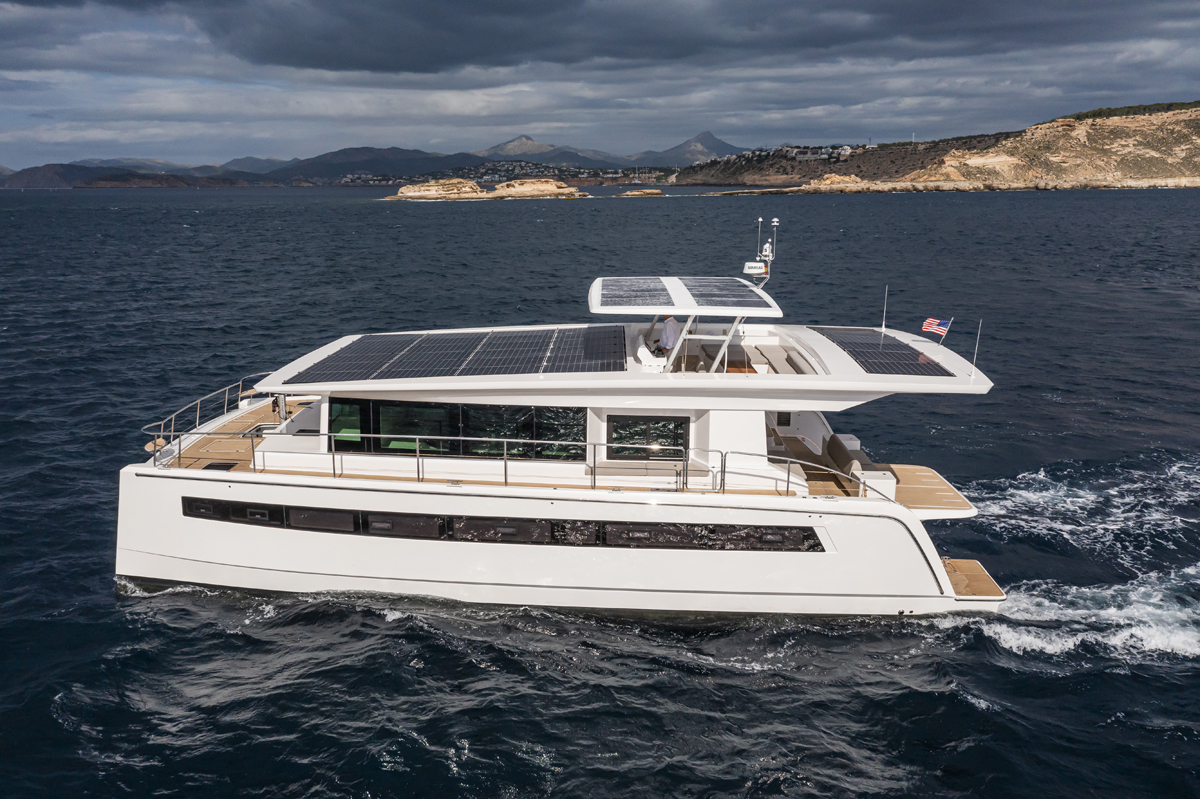
The new Silent 60 solar powered catamaran carries 42 solar panels for 17 kWp of solar energy to power two electric motors of up to 2x340kw. Backed up by a battery capacity of up to 286 kWh, the yacht can cruise efficiently with zero emissions solely on solar power for up to 100 nautical miles a day for weeks.
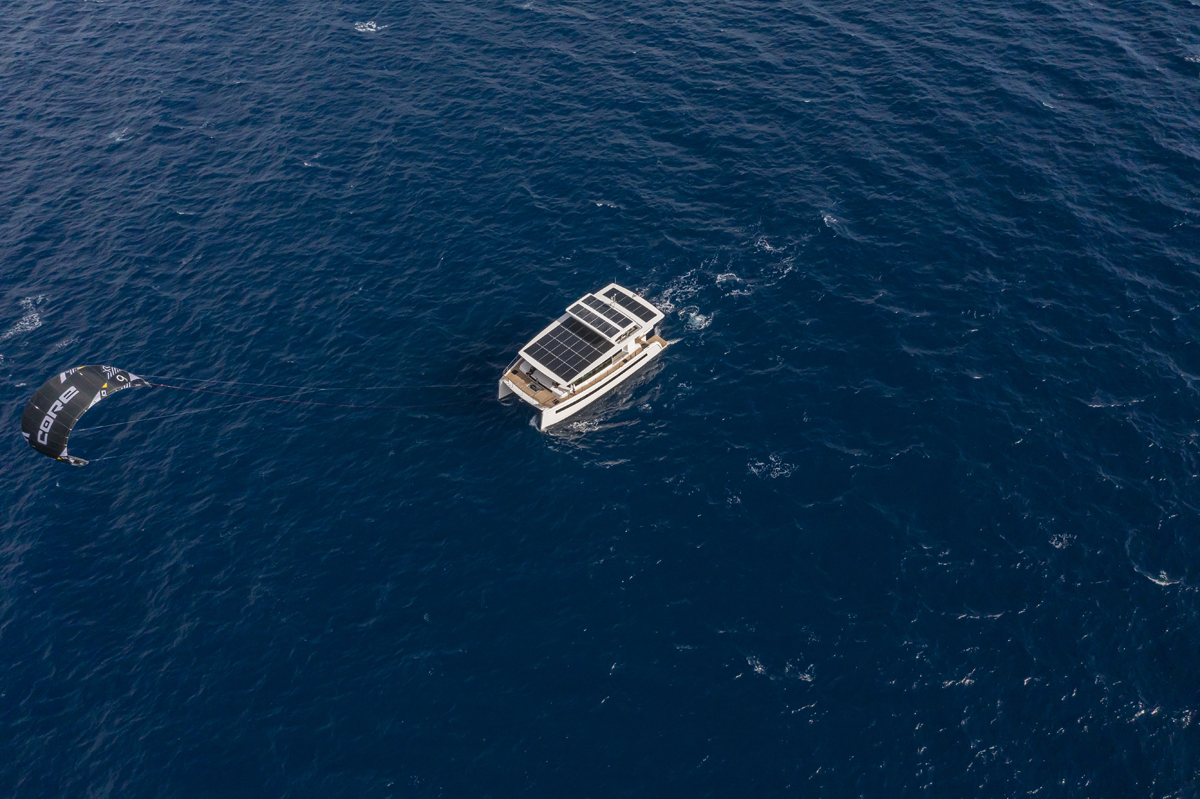
To further improve its green credentials and range, for longer crossings the first Silent 60 is also fitted with a compact 9 or 13 sq. m kite wing.
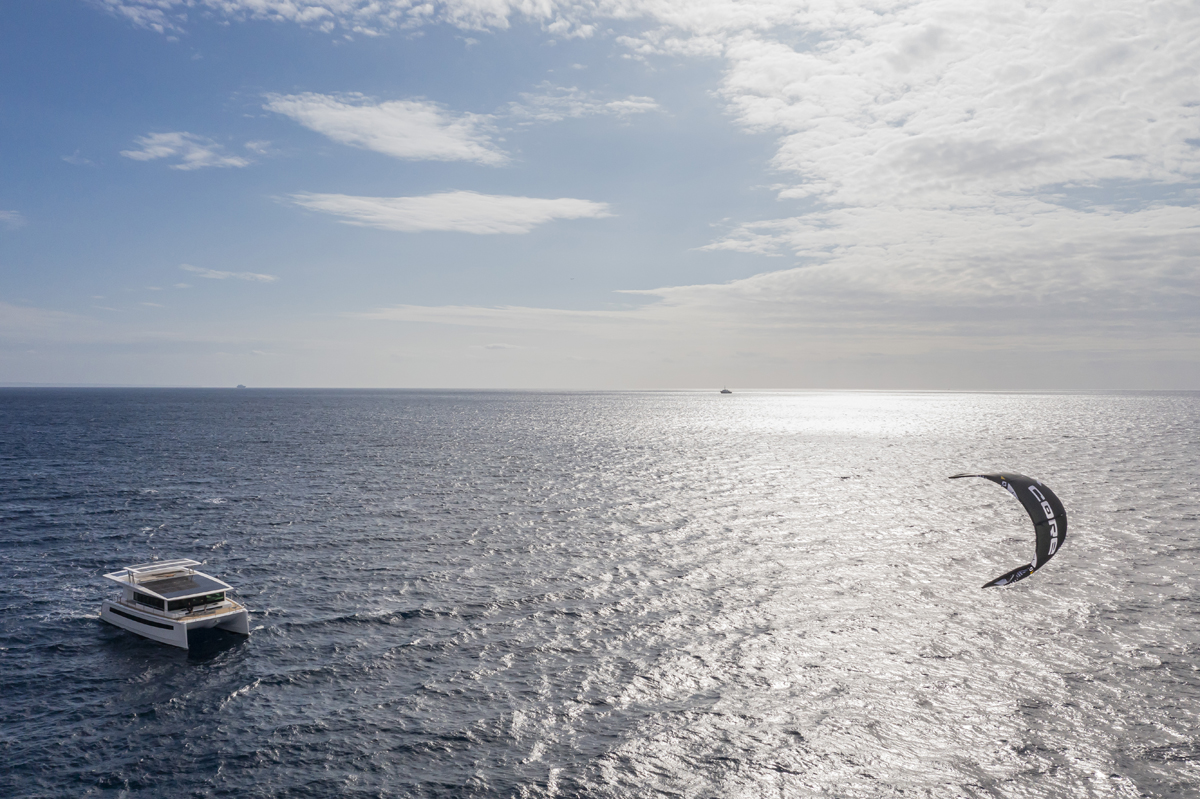
“The main advantages of a kite over a conventional sail system are that it does not throw shade on the solar panels, does not need a tall mast, and generates up to 10 times more power per square meter than a traditional sail. In addition to that it saves about 1,5 tons of weight compared to conventional rigg and costs much less,” says Michael Köhler, Silent-Yachts founder and CEO.
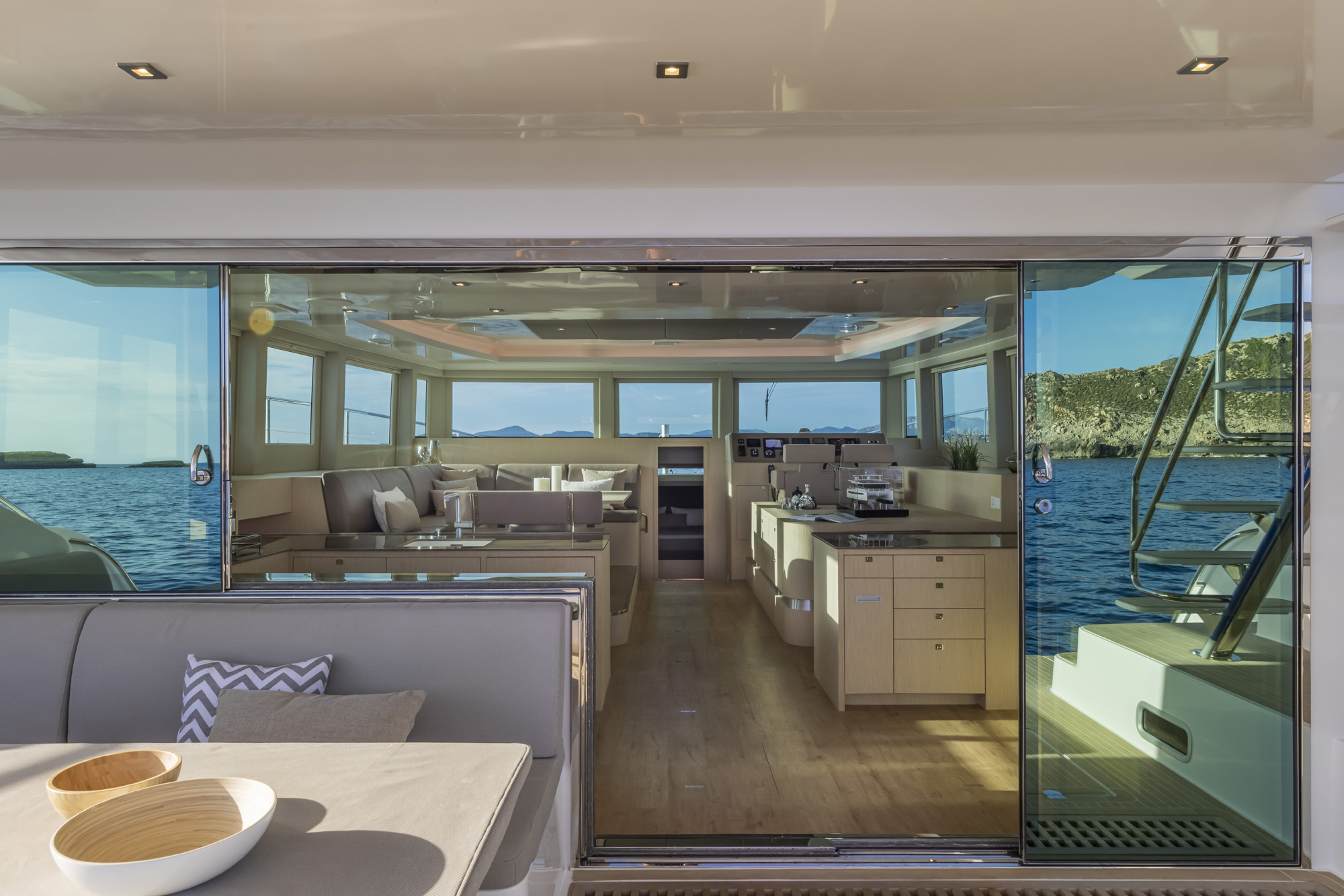
“We tested the performance on different headings and at wind angles of up to 40 degrees with the 9 sq. m kite,” says Silent-Yachts’ Captain Mike Wandler. “Unlike a conventional sailing boat, the best results were directly downwind. Under kite power with no engines on or propellers turning, the boat speed was between 4 and 5 knots. We then switched on the electric motors drawing just 1kW each to reduce drag from the propellers and improve the flow of water over the rudders for better steering, this led to boat speeds from 6 to 7 knots over the same headings – a significant improvement on our original predictions.”
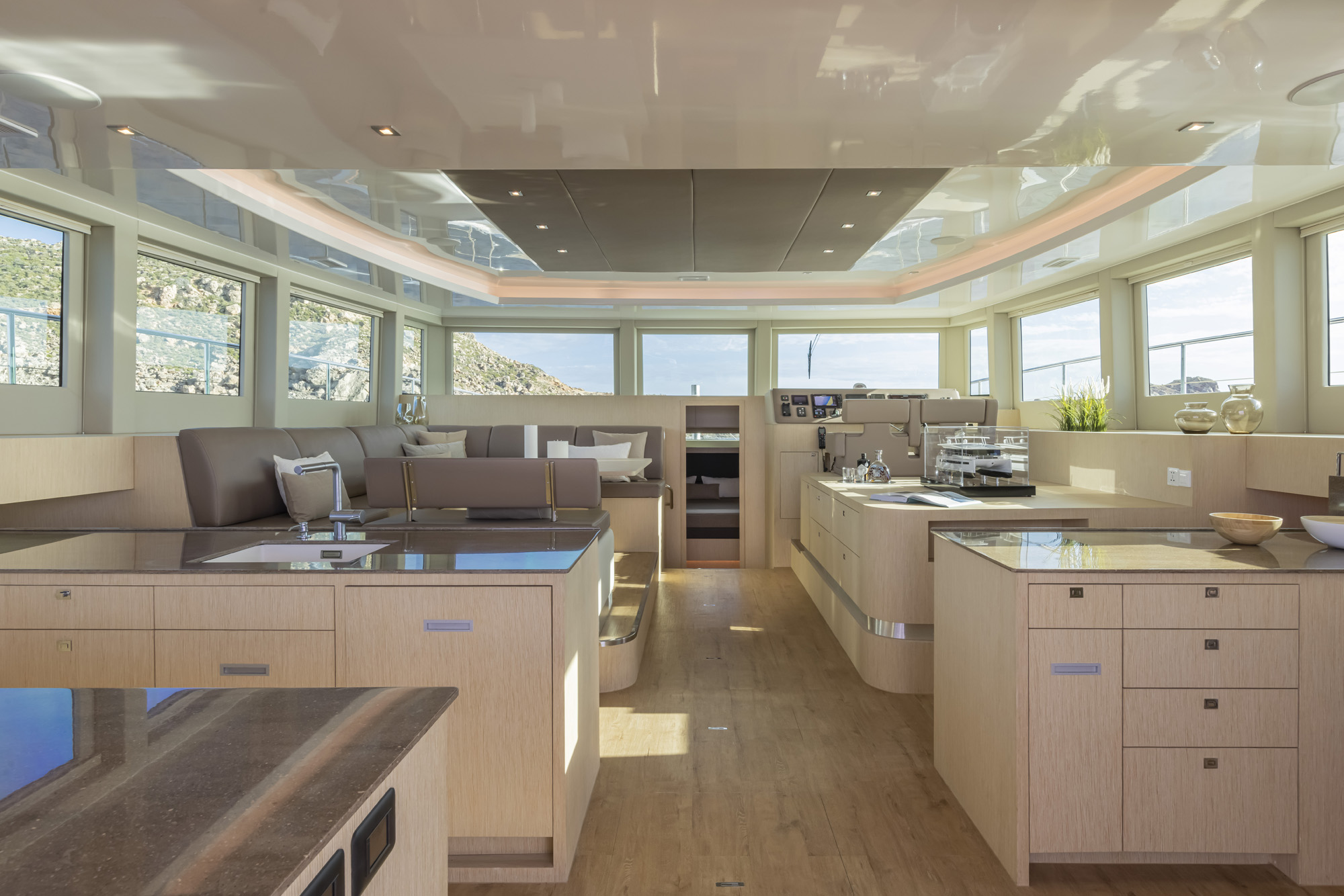
A big advantage of a kite compared to a conventional sail is, that the kite flies in much higher altitudes and therefore gets more steady and stronger winds up there. Therefore, it can already be used at low wind speeds of less than 10 knots, when it would not make any sense to hoist a sail on a sailing boat of comparable size.
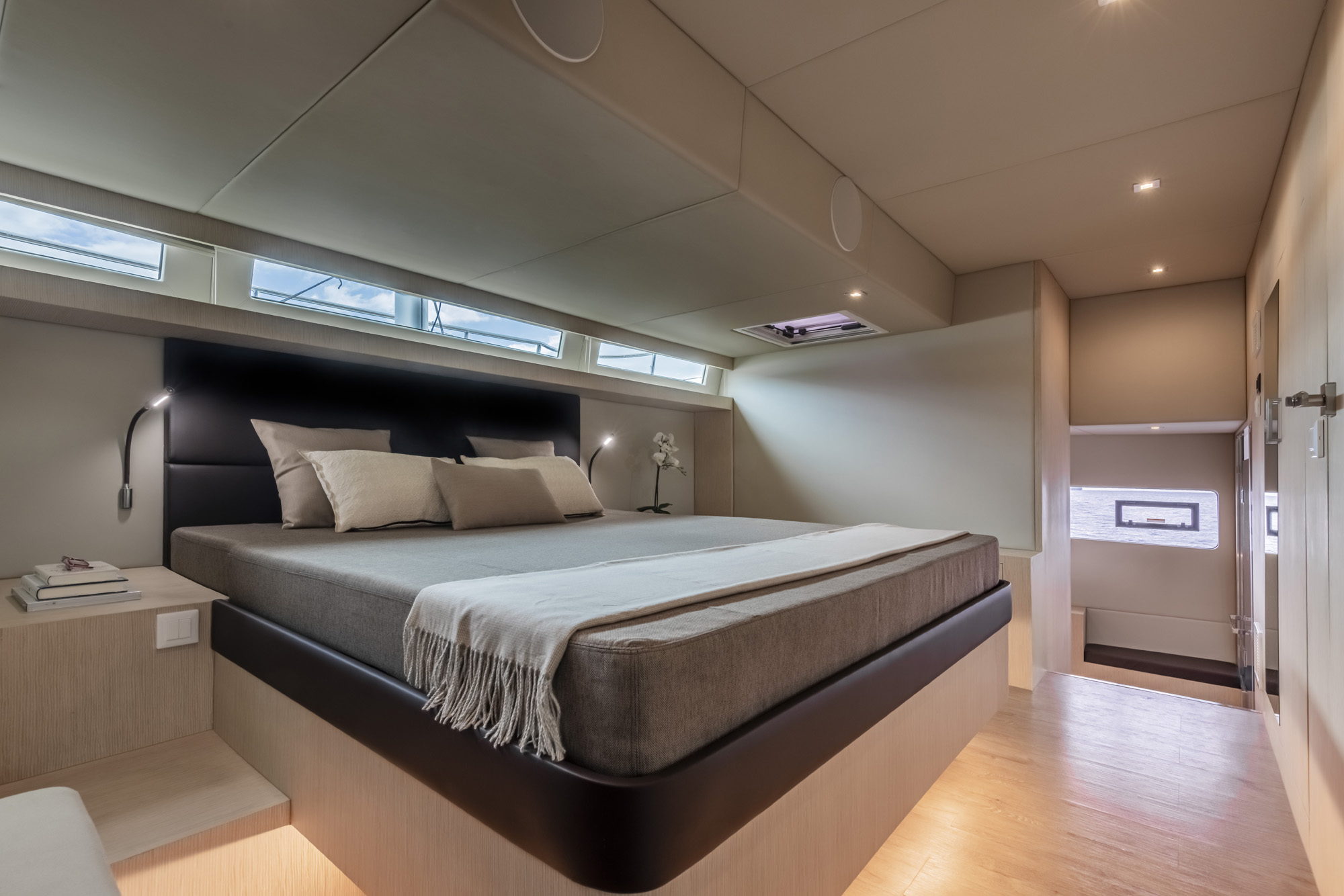
The first Silent 60 can accommodate eight guest cabins on the lower deck, including a master suite, but other layout solutions are available. The social areas on board include an airy main salon, an aft cockpit, a cosy bow area and a flybridge.
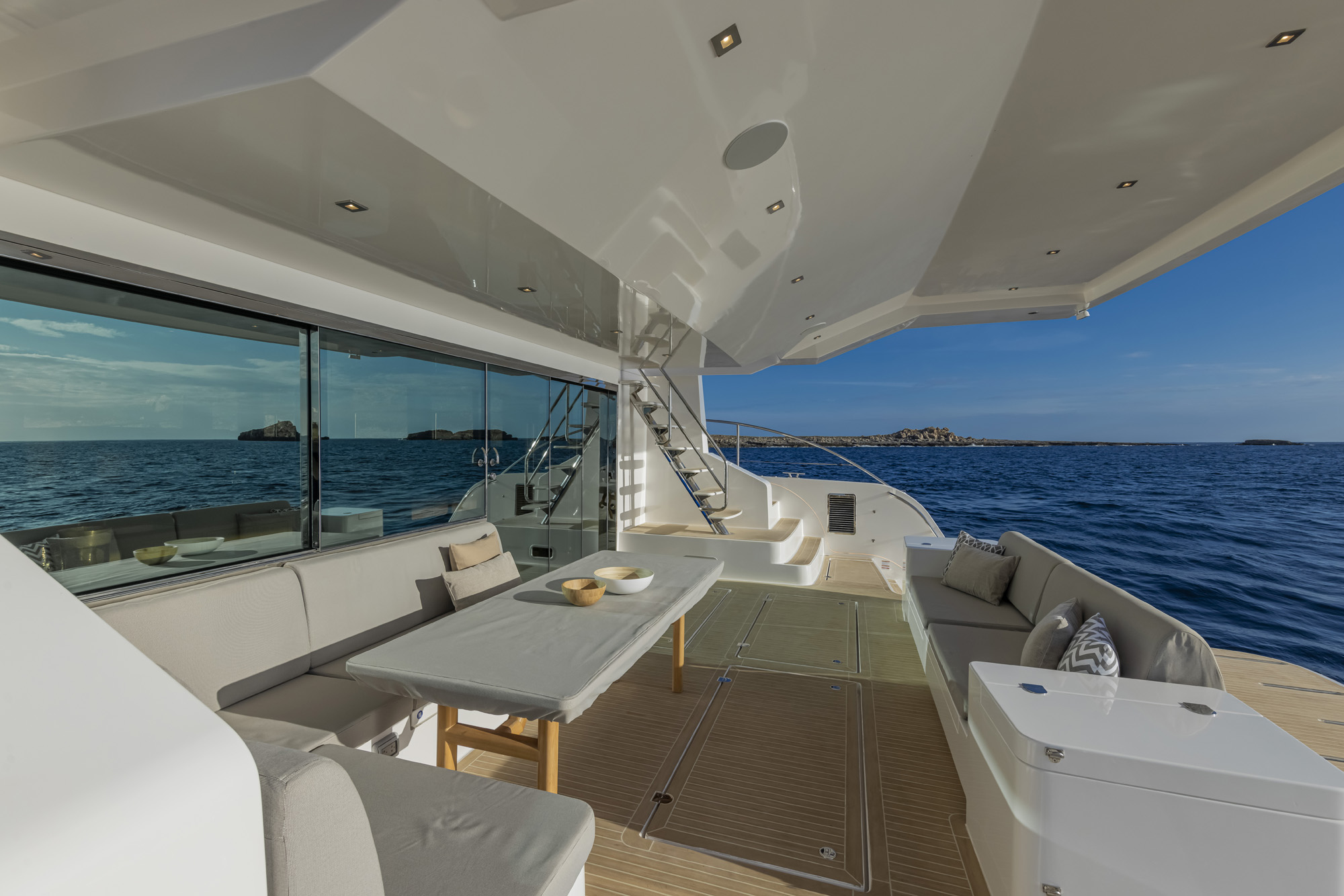
Thanks to a draft of under 1m the yacht can access shallow bays, a crucial consideration for cruising grounds in the Caribbean and South East Asia. Two swimming platforms in the stern can be extended on owner’s request to carry a pair of electric jet skis. The lifting hydraulic platform between the two platforms can carry a 4 meter tender.
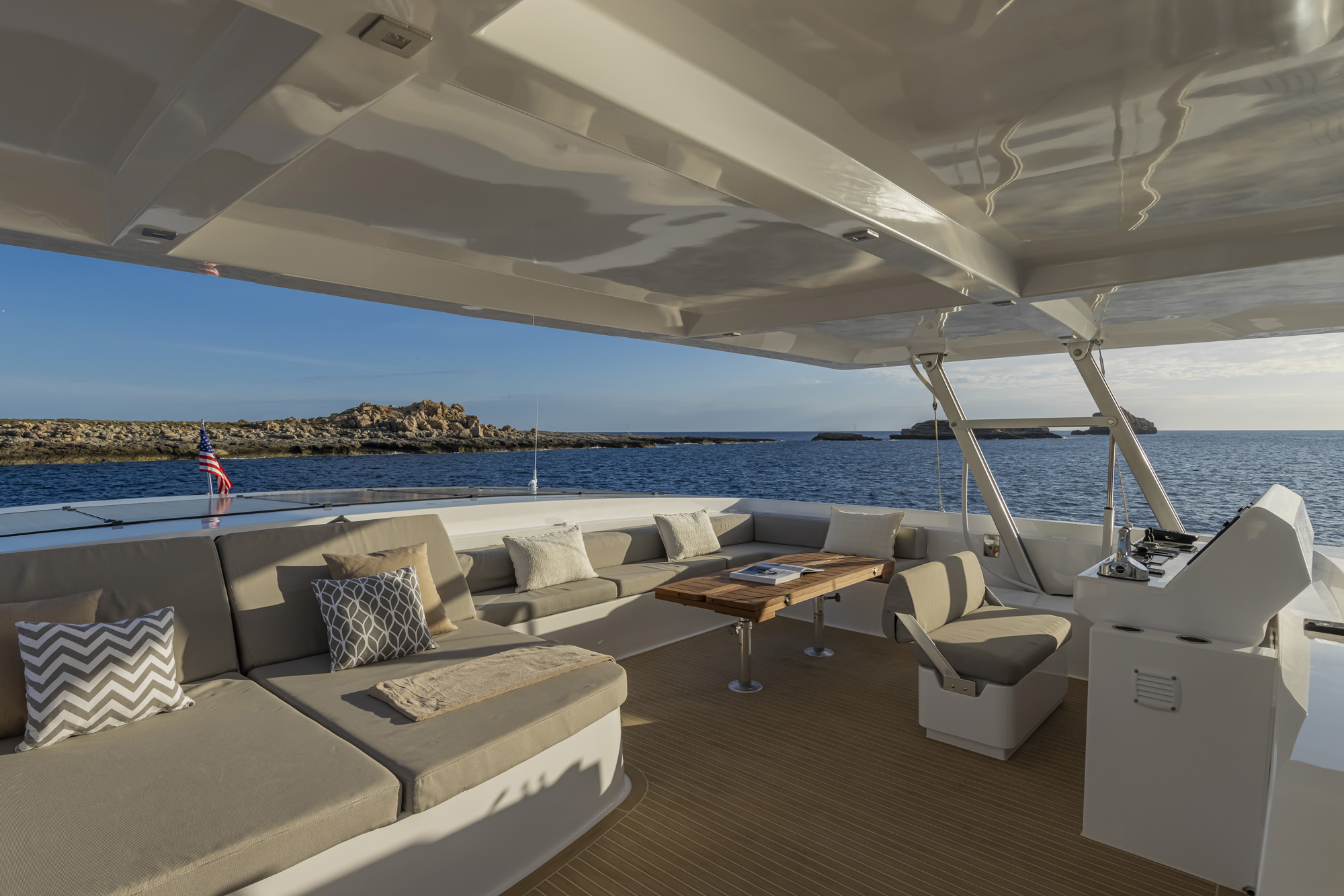
The yacht is designed to go everywhere as a true bluewater cruising yacht. The solar-electric system is configured to power all the on-board systems without the need of fossil fuels for a generator. Featuring a new, high-performance hull form with a longer waterline and reverse bow, the yacht has a cruising speed of 6-8 knots, but can reach 20 knots if needed.
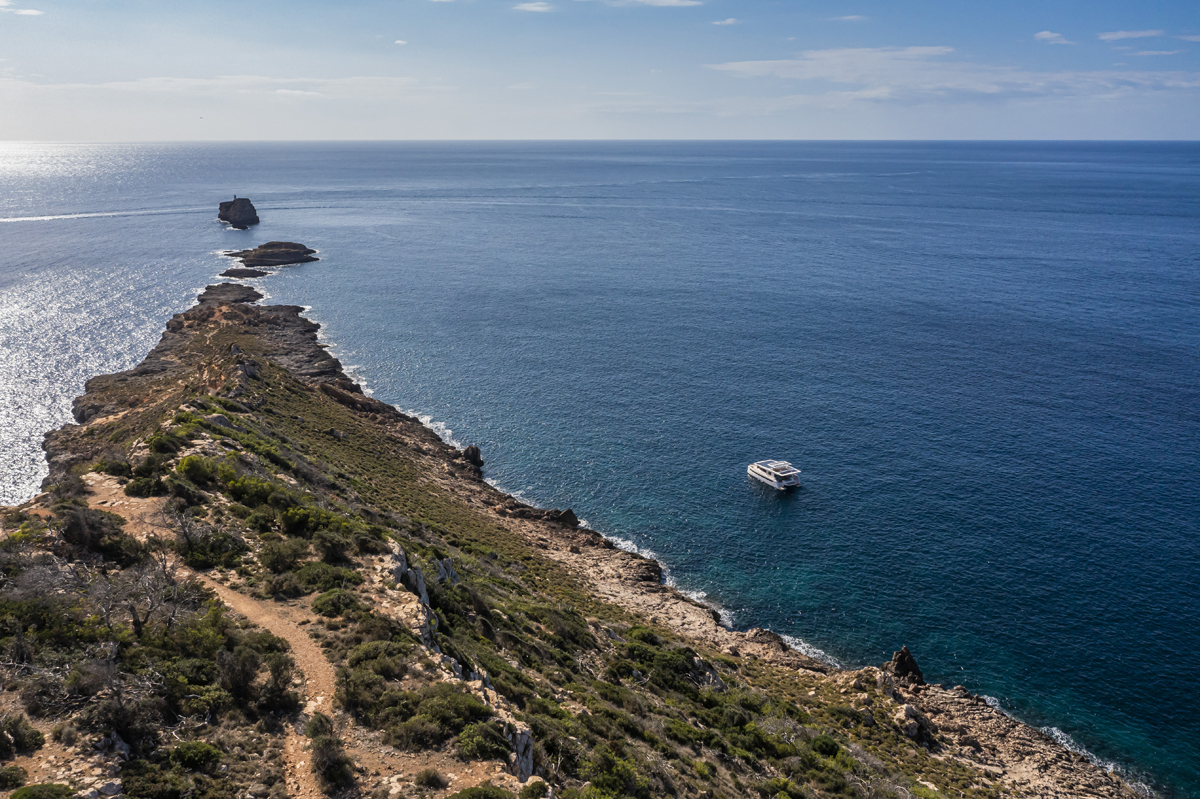
Silent-Yachts is producing the world’s first fully solar-sustainable oceangoing production catamaran yachts. They are powered exclusively by solar energy and capable of cruising up to 100 miles per day. In 2009, founders Heike and Michael Köhler, who have spent 6,000 days cruising more than 75,000 miles all around the world, launched the Solarwave 46, the first fully self-sufficient blue-water catamaran after years of testing solar-powered propulsion, and they have been building boats ever since.
Credits: Alberto Cocchi/Silent-Yachts
